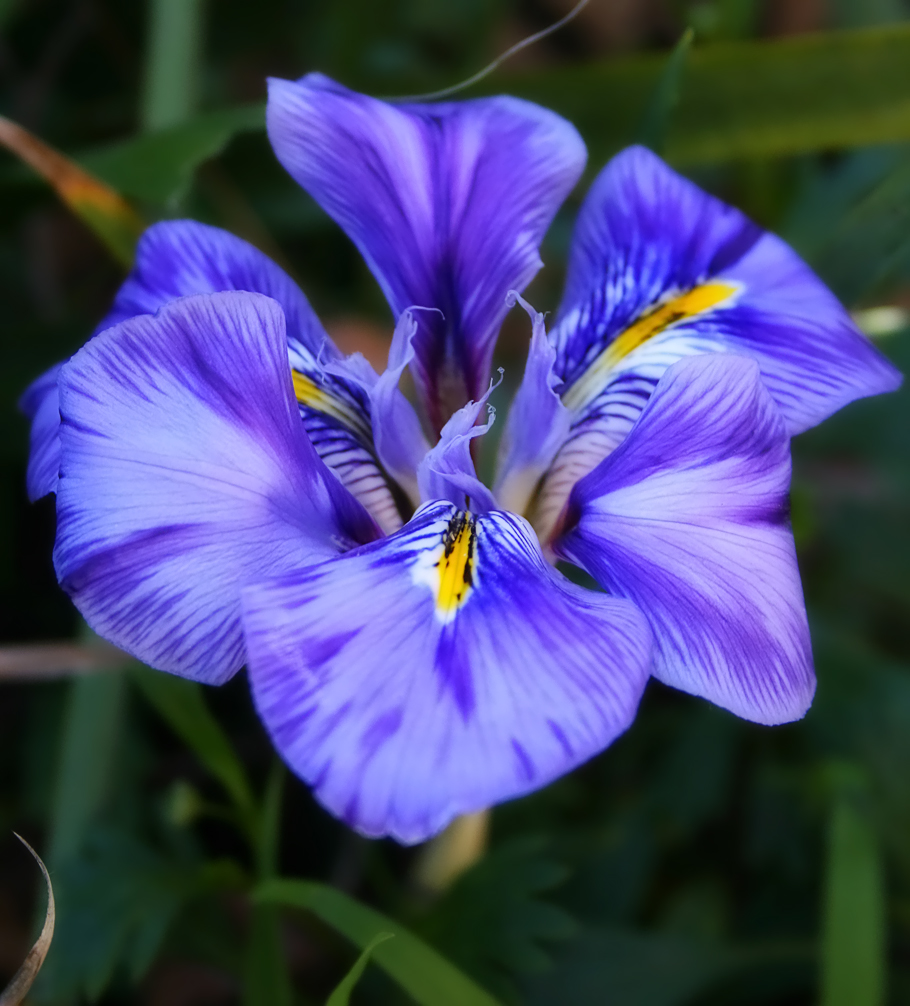Exploring Zigzag Iris
You can use our free plant care app PlantPlants to identify Zigzag Iris. scientifically recognized as Iris unguicularis and classified under Iridaceae, stands out as a distinctive Perennial herb known for its unique characteristics. While it may also be found under other Synonyms, Iris stylosa, Iris acutiloba.withIris unguicularis ‘Alba form.
Temperature
Minimum -10 F (-23 C), Maximum 100 F (38 C)
Watering
Moderate; drought-tolerant once established
Fertilizing
Balanced, slow-release fertilizer
Sunlight
Full sun to partial shade
Toxicity
Toxic if ingested; can cause gastrointestinal distress



Appearance and Growth Of Zigzag Iris
At maturity, this species reaches approximately 12-18 inches (30-45 cm) tall, presenting Linear, sword-shaped leaves; grey-green to blue-green in color along with Flowers are typically purple, blue, or white with a distinctive zigzag pattern; bloom in winter to early spring., followed by Capsule containing seeds that are flat and winged. These features are supported by a reliable Rhizomatous rootstock, ensuring stability and sustained growth.
Zigzag Iris Origin and Habitat
Native to Mediterranean regions, particularly North Africa and southern Europe, Zigzag Iris thrives in Dry, rocky slopes; often found in sandy or gravelly soils at elevations around Sea level to 1600 meters (5240 feet). Best suited for USDA Hardiness Zone 6-9. Whether grown indoor, in a curated garden or a more natural setting, its ecological requirements help maintain its vigor over time.



How to take Care of Zigzag Iris
Light, Soil and Watering Zigzag Iris.
You can use our free plant identify app PlantPlants to chose the best spot for Zigzag Iris, This plant prefers Full sun to partial shade and flourishes in Well-drained sandy or loamy soil with a soil pH of about 6.0 – 8.0.
Zigzag Iris needs watering,Moderate; drought-tolerant once established, guided by PlantPlants app, You can get plants daily watering schedule. to maintain Prefers dry to moderately moist conditions, ensure steady hydration. Applying water through Drip irrigation or watering at the base supports even distribution and helps prevent overwatering or dryness.
Temperature and Humidity
Zigzag Iris performs best within 20 F to 90 F (-6 C to 32 C). Its ideal growth occurs at around 60 F to 75 F (15 C to 24 C), though it tolerates ranges from Minimum -10 F (-23 C), Maximum 100 F (38 C). Additionally, maintaining Low humidity preferred encourages healthy foliage and overall plant vigor.
Fertilization & Soil Health
Feeding with Balanced, slow-release fertilizer at the recommended Seasonal Application Frequency on PlantPlants App keeps nutrients balanced. Incorporating Compost or well-rotted manure enhances soil structure and fertility, while staying alert to Yellowing leaves, stunted growth helps you adjust care as needed to maintain optimal plant health.
Routine and Maintenance
Regular attention ensures this plant’s beauty and longevity. After flowering for Remove spent flowers and any damaged leaves tidies its appearance, while Every 2-3 years may be necessary as it grows, requiring a Increase pot size by 1-2 inches when repotting increase and a fresh Sandy loam with good drainage. for Staking or Support. Generally does not require staking.
Seasonal Changes and Propagation of Zigzag Iris
During Late summer to early fall, growth may slow and some Leaves may die back in summer; typically green year-round can occur. For those looking to propagate, consider Division of rhizomes; seed propagation and provide Stratifed for 6-8 weeks, germinates at 60 F to 70 F (15 C to 21 C) when starting from seed. If using cuttings, follow Take rhizome cuttings in late summer; plant in well-draining soil. to ensure successful rooting and healthy new plants.
Pests, Diseases and Prevention
our free plant identify and care app PlantPlants can help you diagnosisZigzag Iris problems.Though generally robust, keep watch for Aphids, spider mites, iris borer and remain vigilant against Root rot, leaf spot. Implementing Good drainage, proper spacing, and sanitation and applying Insecticidal soap for pests, fungicides for diseases when issues arise will help sustain the plant thriving.
Companions and Uses of Zigzag Iris
This plant pairs nicely with Daylilies, catmint, salvia and shows None documented, making it a flexible choice for various Borders, rock gardens, dry slopes.
Edible and Cultural Aspects
the Edible Parts: None; primarily ornamental. Toxicty of Zigzag Iris, Toxic if ingested; can cause gastrointestinal distress. learning about its Not applicable, None, and Not applicable can be intriguing for culinary explorers. Some traditions highlight its Historically used in traditional medicine for various ailments (not widely supported by modern research) or note its Valued for ornamental purposes; often symbolizes hope and renewal.
Conservation and Status
With an Not assessed, proper Habitat preservation; cultivation in gardens to promote biodiversity
Frequently Asked Questions
1. How much sunlight does the Zigzag Iris need?
– It thrives in full sun to partial shade.
2. What type of soil is best for Zigzag Iris?
– It prefers well-drained sandy or loamy soil with a pH range of 6.0 to 8.0.
3. When does the Zigzag Iris bloom?
– It typically blooms from winter to early spring.
4. Is the Zigzag Iris drought-tolerant?
– Yes, once established, it is drought-tolerant.
5. Can I grow Zigzag Iris in a pot?
– Yes, they can be grown in pots as long as there is good drainage.
6. How do I propagate Zigzag Iris?
– You can propagate it by division of rhizomes or by seeds.
7. Does the Zigzag Iris require a lot of maintenance?
– It requires minimal maintenance; mainly occasional pruning and fertilization.
8. What pests affect Zigzag Iris?
– Common pests include aphids, spider mites, and iris borers.
9. Is the Zigzag Iris toxic to pets?
– Yes, it can be toxic if ingested, causing gastrointestinal distress.
10. How often should I water Zigzag Iris?
– Water every 7 days in summer and every 21 days in winter.


